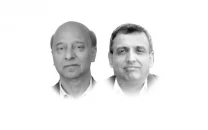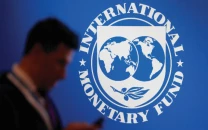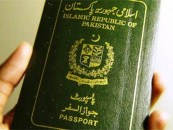Manufactured fears: how bias is hijacking India's public policy
Those who challenge the narrative are treated with suspicion.

The history of South Asia is marked by a series of sweeping transitions — from the final days of the Delhi Sultanate (1206-1526) to the zenith and decline of the Mughal Empire (1526-1857), and eventually the onset of British colonial rule, which lasted until independence in 1947. Each phase in this complex history unfolded from the ashes of the former, interweaving legacies of power, cultural identity, religious interaction and imperial ambition.
What began as fragmented rule matured into imperial dominance, and later succumbed to foreign colonization, culminating in one of the most significant geopolitical reconfigurations of the modern era: the birth of sovereign India and Pakistan.
Post-independence, India has witnessed a dramatic transformation. It emerged as a pluralistic democracy, achieved considerable economic success and developed strong institutions.
However, despite these national achievements, recent years have seen an unsettling shift. Under Prime Minister Narendra Modi, India appears to be entering an era where public policy is increasingly shaped by a distorted perception of "risk" — a perception rooted in historical animosity and fueled by political ambition.
The Reinvention of Risk: A Political Tool
In an effort to assert unchallenged political supremacy, Modi has crafted a new, subjective narrative of risk that leans heavily on centuries-old communal tensions — particularly those tied to the Muslim rule between 1206 and 1857. Rather than addressing the multifaceted challenges of a modernising India, Modi's regime appears fixated on defining "risk" through a lens of cultural grievance and identity politics.
This redefinition is not objective. It emerges from deep-seated biases and historical resentment, most notably against India's Muslim minority. By presenting Muslims — as well as ideas associated with them — as inherent threats to Indian identity, Modi has orchestrated a national discourse steeped in suspicion and fear. The goal is not merely to govern, but to dominate the public mind and emotional imagination of the people.
This approach helps the regime create a fabricated consensus: that certain communities, and by extension certain values and ideas, pose existential threats to national unity and progress. It is a classic tactic in authoritarian playbooks — construct an enemy, shape the narrative and justify sweeping political control in the name of national security.
Biased Risk Perception and Public Policy Distortion
Public policy in a democracy should be informed by rational assessments of danger, grounded in evidence and proportional response. But when leaders allow personal or ideological biases to guide their perception of risk, the result is a distortion of public priorities. Resources that should be devoted to infrastructure, healthcare, education or regional diplomacy are instead diverted to managing imagined or exaggerated threats.
This warped risk perception becomes particularly dangerous when it is disseminated through emotionally charged and repetitive rhetoric. The more fluently an idea is expressed — especially when it carries emotional weight — the more likely the public is to believe in its importance. In this context, Modi's anti-Muslim narratives have become dangerously fluent: echoed across rallies, institutional policies, social media and, most prominently, the Indian mainstream media.
Media Amplification and Manufactured Fear
A critical cog in this machinery is India's media landscape, which under Modi's tenure has increasingly functioned as an arm of state propaganda. Stories of imagined or exaggerated risks tied to Muslims or Pakistan are given disproportionate coverage. Even when fabricated or misleading, these stories generate public panic and resentment, creating a loop of fear that sustains itself.
The more these stories are repeated, the more they dominate public consciousness. Eventually, they become self-fulfilling prophecies: the fear becomes the justification for more authoritarian policies. Those who challenge the narrative — who argue that the risks are overstated or manufactured -— are treated with suspicion, sometimes branded as traitors or "anti-national".
This vicious cycle results in a public policy environment where actual national challenges — such as poverty, unemployment, climate change, education reform and regional peace — are relegated to the background. A fictitious war against "Kashmiris" "Muslims (inside)" and "Pakistan" is waged in headlines and policies, allowing the regime to deflect accountability and consolidate power.
A Call for Reset: Reclaiming Public Purpose
India stands today at a crossroads. While its economic and technological strides should position, it is increasingly being seen as a nation consumed by its internal divisions and insecurities. It is time for India's policymakers and citizens alike to reclaim their priorities.
This requires recognising that the path to greatness does not lie in exclusion, hate or historical score-settling. It lies in inclusion, cooperation and evidence-based governance. It requires accepting that the obsession with defining and amplifying subjective risks only serves to distract from the real tasks of nation-building.
Instead of letting fear define its future, India must now embrace the promise of its pluralistic past and its shared future with its neighbours.
Conclusion
It's time we befriended once again — as neighbours, as partners and as people with intertwined histories and shared destinies.
We must explore mutual benefits — in trade, education, cultural exchange and regional peace.
We must grow out of the subjective definition of risk — and replace it with a rational, inclusive vision of national security.
We must ensure harmonious regional stability — by placing people's welfare, peace and prosperity at the heart of public policy.
India's greatness lies not in stoking the embers of its past, but in lighting the path to a more inclusive, stable and forward-looking future.














COMMENTS (1)
Comments are moderated and generally will be posted if they are on-topic and not abusive.
For more information, please see our Comments FAQ